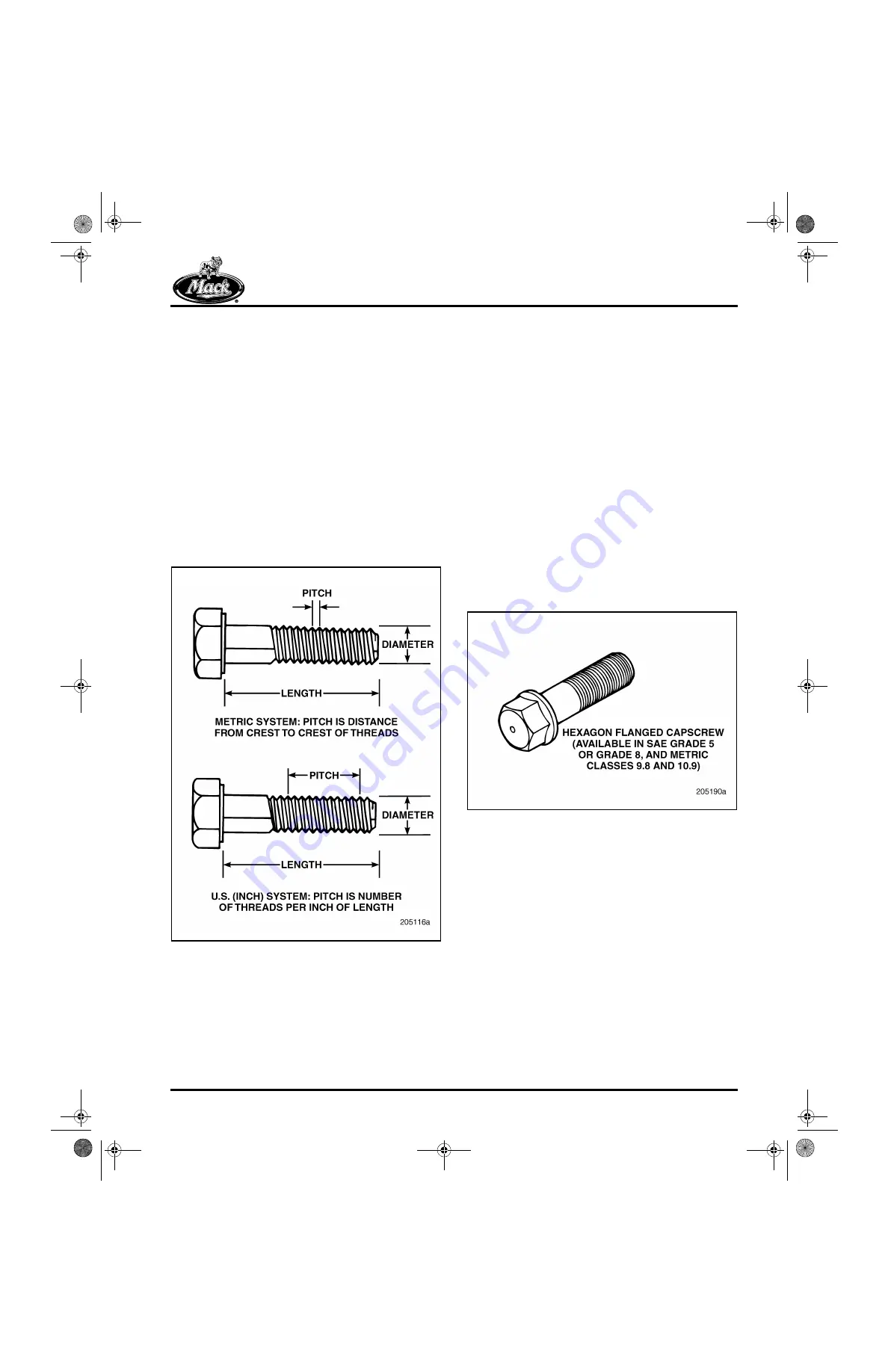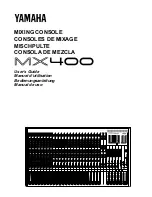
SPECIFICATIONS
Page 331
Fastener Sizes and Types
The first and most important fact that the
mechanic must know about a fastener is whether
it is a U.S. (Inch System) or a metric thread. Next,
the size of the fastener, which is usually
determined by the diameter of the shank, the
length of the fastener, which is usually measured
from the bottom of the head to the end of the
thread, and the pitch of the threads.
The pitch of U.S. (Inch System) fasteners is
measured by determining the number of threads
per inch. The two pitches commonly used in
vehicles are coarse thread, officially called
Unified National Coarse (UNC), and fine thread,
officially called Unified National Fine (UNF).
336
Figure 336 — Fastener Dimensions
The pitch of metric fasteners is measured by
determining the millimeters per thread. For
example, a bolt with 0.8 pitch would have 125
complete threads in a 100-millimeter section
(100 mm divided by 125 threads equals 0.8), and
a bolt with 1.0 pitch would have 100 threads in a
100-millimeter section. Pitch may be measured
directly, using a ruler and counting the threads.
Also, thread pitch gauges are available for both
U.S. and metric threads, which make it easy to
check the pitch of a fastener.
In the U.S. system, a typical designation would
be: 7/16-20 x 1. This describes a bolt that is
7/16 inch in diameter, has 20 threads per inch,
and is one inch long. The metric system is similar.
A typical metric designation would be: 10 x 0.8 x
25 mm. This describes a bolt that is 10 mm in
diameter, has a thread pitch of 0.8 (0.8 mm per
thread), and is 25 mm long.
337
Figure 337 — Flanged Capscrew
5_106_00.bk Page 331 Friday, August 4, 2000 11:17 AM
BDC for engine manuals and specs
















































